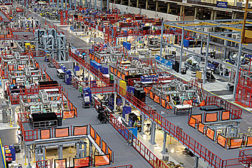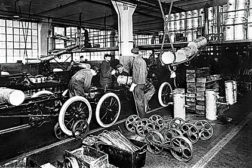Austin Weber
Austin has been senior editor for ASSEMBLY Magazine since September 1999. He has more than 21 years of b-to-b publishing experience and has written about a wide variety of manufacturing and engineering topics. Austin is a graduate of the University of Michigan.
ARTICLES
New Materials Allow Soldiers to Shed Weight
The U.S. Army is enlisting more aluminum and composites.
November 1, 2013
Does 3D Printing Work with Wiring?
Additive manufacturing can be used to produce connectors and terminals.
October 1, 2013
2013 Assembly Plant of the Year
Northrop Grumman Soars With Automation
The robotic Integrated Assembly Line in Palmdale, CA, revolutionizes how airframes are built.
October 1, 2013
The Moving Assembly Line Turns 100
Several mega-forces were behind Ford Motor Co.’s engineering milestone.
October 1, 2013
Never miss the latest news and trends driving the manufacturing industry
Stay in the know on the latest assembly trends.
JOIN TODAY!Copyright ©2024. All Rights Reserved BNP Media.
Design, CMS, Hosting & Web Development :: ePublishing







